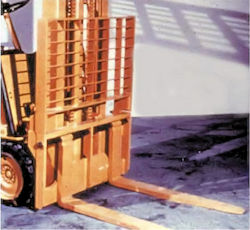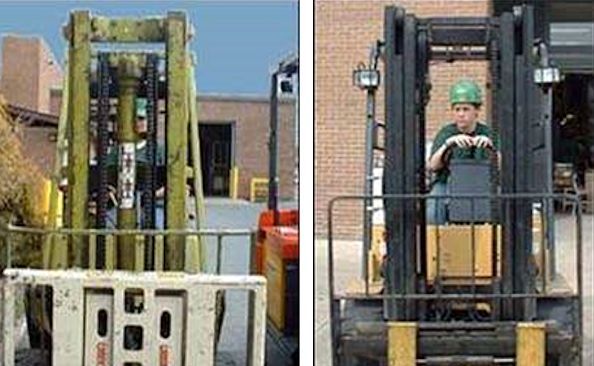Forklift Safety Measures
A backrest extension on the forks prevents part of the load from falling rearward toward the operator.
This is required when loads are lifted high and the type of load would allow all or part of it to fall to the rear under conditions such as acceleration, sudden stops or driving on an uneven surface.
Overhead Guard
An overhead guard prevents an object on the forks or on a high rack from falling onto the operator while picking or placing a load at elevation. Overhead guards are required on all forklifts that can lift a load above the operator unless conditions such as clearances would not allow the forklift to be used.
The guard is designed to be effective in deflecting small packages. They are not designed to withstand the impact from a full load.
Mast
The masts on newer forklifts are designed for traveling so that operators have a better view through the center in the direction of travel.
The image to the right demonstrates improvements in forklift mast design.
Operator Restraints
Operator restraints will hold you in the seat if you strike an object or if the forklift overturns.
Since 1992, forklift manufacturers have been required to equip new forklifts with operator restraints such as seat belts. Many forklift manufacturers offer restraint systems that can be retrofitted on older forklifts.
Failure to wear a seat belt can result in the operator being thrown outside the protective cage in the event of an overturn. If your forklift has a restraint, such as a seat belt or a lap bar, you must use it.
Knowledge Check Choose the best answer for the question.
2-2. Which forklift component prevents part of the load from falling rearward toward the operator?
You forgot to answer the question!



